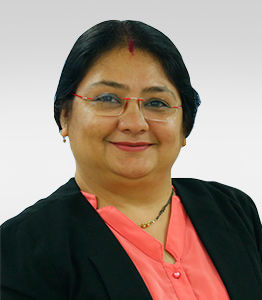
Bid Adieu - Litigation

In a move to reduce the pending litigation, the budget 2019 had proposed “Sabka Vishwas” Scheme under indirect taxes. The said scheme turned out to be a big success. On similar lines, the Budget 2020 announced “Vivad Se Vishwas” scheme to reduce 483,000 appeals which are pending before various appellate authorities under the direct taxes.
The bill to introduce “Vivad Se Vishwas” scheme was moved in the Parliament today stating the objectives of reducing the litigations that consume substantial amount of time, energy and resources both in the form of loss of funds and others. It is believed that the Scheme will provide resolution to the disputes, and also generate timely revenue for the Government.
The highlights of The Direct Tax Vivad Se Vishwas Bill 2020 (Scheme) are as under:
What is Covered under the Scheme
The Scheme is applicable in respect of certain appeals pending as on 31st January 2020 before various appellate authorities including CIT(A), ITAT, High Courts and Supreme Courts (Appellate Authority).
Relief Available under the Scheme
As per the Scheme, a taxpayer opting for the resolution under the scheme is required to pay the amounts as per the table below:
| Nature of tax arrears | Amount payable on or before 31st Match 2020 | Amount payable thereafter up to last date as may be specified |
| Where tax arrears include disputed tax, disputed interest and disputed penalty | Amount of the disputed tax | Amount of disputed tax plus 10% thereof. The additional 10% will be restricted to the amount of interest and penalty |
| Where tax arrears relates to disputed interest or disputed penalty or disputed fee | 25% of disputed interest or disputed penalty or disputed fee | 30% of disputed interest or disputed penalty or disputed fee |
Computation of Tax Arrears
- The scheme provides to extend resolution in respect of the Tax Arrears, which includes Disputed Tax, Disputed Interest, Disputed Penalty and Disputed Fees in respect of which an appeal is pending before Appellate Authority.
- The computation of Disputed Tax has to be done in the following manner:
- In a situation where the income has been enhanced as a result of assessment by tax officer, the difference between the tax payable on the assessed income as reduced by tax payable on returned income that is not subject matter of appeal.
- In a situation where the loss has either been reduced or converted into profit as a result of assessment, the tax payable on the amount of variation.
- The above methodology has to be adopted for computation of tax under general provision of the act as well as MAT/ AMT.
- Disputed interest has been defined to mean the interest charged or chargeable on the disputed tax and will also include interest against which an appeal has been filed;
- Disputed penalty means penalty levied or leviable in respect of disputed income or disputed tax and will also include penalty against which an appeal has been filed.
The Process
- As per the scheme a taxpayer is required to file a declaration before the designated tax authority, who within 15 days of receipt of declaration shall pass an order determining the amount payable by the taxpayer and issue a certificate.
- The taxpayer within 15 days from date of receipt of certificate, will pay the amount to designated authority. On receipt of amount, the designated authority shall pass an order in writing stating the subject amount as been paid.
- The order passed by the designated authority shall be final and as a result of the same, the appellate authority or arbitrators or mediator shall be barred from proceeding with the appeal.
- It is worthwhile to note that upon filing of declaration by the taxpayer, the concerned appeal pending before the CIT(A) or ITAT shall be deemed to have been withdrawn. Whereas, in cases where the dispute is pending before the High Court (in a writ or appeal) or in Supreme Court, the taxpayer will have to withdraw the said appeal/ writ and furnish the proof alongwith the declaration to be filed with designated authority.
- The taxpayer is also required to withdraw from arbitration/ MAP, if any filed under any law or tax treaties and furnish the proof alongwith the declaration. Further, the taxpayer is also required to waive his right that may be available to him under any law or any tax treaty in respect of the tax arrears.
- The Scheme also specifies that in case the taxpayer makes any false statement or violates any condition of this scheme, the declaration filed by him will be deemed to have never been made and the pending dispute will get revived.
- The designated authority has also been barred from instituting any proceeding in respect of an offence or impose any penalty or charge interest under the Act, in respect of the tax arrears.
What is not covered under the scheme
- The tax arrears arising out of search or seizure proceedings;
- Those years in respect of which prosecution has been launched before filing of declaration;
- Tax arrears in relation to undisclosed income from sources outside India;
- Those cases where addition has been made on the basis of information received from a foreign country as part of exchange of information u/s 90 or 90A;
- Cases where an enhancement has been proposed by the CIT(A);
- Any person who has been detained under COFEPOSA Act, 1974, before filing of declaration;
- Any person in respect of whom prosecution has been instituted before filing of declaration under any of the specified acts; and
- Any person notified under Special Court (Trial of Offences Relating to Securities) Act, 1992, before filing of declaration.
The above article is authored by Anita Basrur, Partner at Sudit K Parekh & Co. LLP. The views expressed our personal.
Recent Insights
- ICAI FAQ on Key accounting implications arising from the New Labour Codes
- SEBI Board Approves New Mutual Fund Regulatory Framework
- Revision in the Definition of "Small Company" under the Companies Act, 2013
- Implementation of the Four Labour Codes - Effective 21 November 2025
- Exploring Poultry Valuations
SUBSCRIBE TO OUR INSIGHTS
We are constantly working on sharing relevant alerts & publications to keep you informed on the latest developments.




Our Comments
The introduction Vivad to Vishwas Scheme is a welcome move and it is expected to bring down the pending appeal to some extent. The scheme is likely to be availed by taxpayer:
Had the scheme offered some abatement on the tax arrears, similar to the Sabka Vishwas Scheme which was introduced last year, it would have brought down the pending litigation significantly besides bringing revenue to the exchequer.